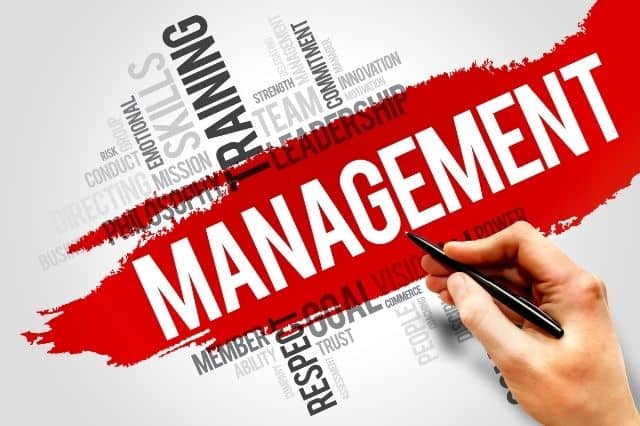1. Set vision
Senior leaders are responsible for setting the vision for their organizations. They help people know, understand, and most importantly, feel excited about the direction of the organization. Once, I heard Brian Moynihan, CEO of Bank of America, be asked “What does it mean to be a leader?” Brian said, “It means I repeat myself a lot.”
I chuckled because I knew it was true. Great leaders don’t mind being redundant in saying the same things, especially when it comes to the vision of the company. People want to know where the company is headed and what the path to future success looks like. The best senior leaders know it’s their job to repeatedly communicate about it — and in a compelling way.
2. Ensure and enforce mindset
Highly effective senior leaders know it’s up to them to ensure everyone has the right mindset. They spend time with their organizations and look for telltale (but sometimes, subtle) signs of who’s with them and who’s not. They know all employees need to believe in the organization’s ability to achieve its biggest goals, and also in their own ability to contribute to that success. Instead of blaming others, they look for people’s willingness to accept responsibility and own the outcome when things go wrong. They watch and listen closely to find out who is aligned with the vision, mission and core values and who isn’t. They look for examples of character and competence. They get their ears to the ground and find out what’s happening at all levels.
They do all this because they know that people matter, and without the right people in the right seats at the right time, they won’t be able to execute on the dream. I once heard that Steve Jobs would fire people who called something “impossible” or said “it can’t be done,” almost on the spot, because he simply knew how very toxic that kind of mindset was and how disruptive it was to the plan. Great senior leaders care for their company culture. They do so by evaluating talent at all levels on dimensions like these.
3. Create quality conversations and deliver clear communication
Exceptional senior leaders create dialogues everywhere they go. While they might be the “smartest person in the room,” they’re not smarter than the room. They know that others have perspectives and information they don’t have, and they need to create a secure environment to get it. They constantly put themselves and others in forums to get and spread information.
Several years ago, I worked for a commercial bank that had consistent “Voice of the Employee” and “Voice of the Customer” sessions so that we could learn about the experience everyone was having. For me, it was critical to ensure that all types of customers and employees were invited to these, not just top-performing employees or our best and happiest customers. I’d regularly invite those I knew had grievances and weren’t afraid to raise them. I believed this was how we’d get better. There were also constant town halls. The best executives repeatedly make a point to show vulnerability and humility, which was necessary for others to feel safe speaking their truths. Great executives don’t get angry or defensive when someone asks a tough question or raises a differing viewpoint. They crave these kinds of moments because they know they’re the gateway to greater engagement and trust in the future.
Related: What it Really Takes to Transition from Entrepreneur to CEO
4. Spark curiosity
Great senior leaders are constantly on the prowl for new ideas and information. They regularly seek out new research and data that applies to their industry, their competitors and the world as a whole. They’re innovative and adaptable. They’re proactive, not reactive. They don’t wait for a problem to become an emergency before they act; they act in advance.
As Wayne Gretzky famously said, “Skate to where the puck is going, not to where it has been.” Highly effective senior leaders devote strategic time, every week, to considering the ever-changing business landscape and what it all means for their company, their employees and their customers. They also recognize how important it is for their organization and employees to be constantly learning as well. They invest heavily in training, learning and development, and at all levels. They don’t just offer a curriculum that helps people do their jobs better, but a variety of offerings that helps how people think and interact.
5. Deliver results
The best senior leaders are responsible for the results of the organization, period. When the organization isn’t delivering, it can be tempting to blame others — but almost always, it comes down to leadership. Strong executives take the blame when things go wrong and figure out what they can do differently. When things are going well, strong executives freely and openly give credit away to others.
As Harry S. Truman said, “It’s amazing what you can get done when you don’t care who gets the credit.” Truer words were never spoken. Great senior leaders ensure that everyone owns the results. They don’t so much “hold others accountable” as they help others hold themselves accountable. They create a culture where everyone understands that results matter and are driven to achieve those (the right way). They “showcase swimming” and lead by example by helping to manage and mitigate outside factors that might have an impact on the results early enough so that goals can still be achieved. They check in on the progress, early and often. They ask the right questions. They focus on what they can control; not what they can’t. As they model these things, they ensure the whole organization is results-driven.
It doesn’t matter what kind of division or department you lead. If you’re not doing these five things, you’ll struggle to help your organization become truly successful.

